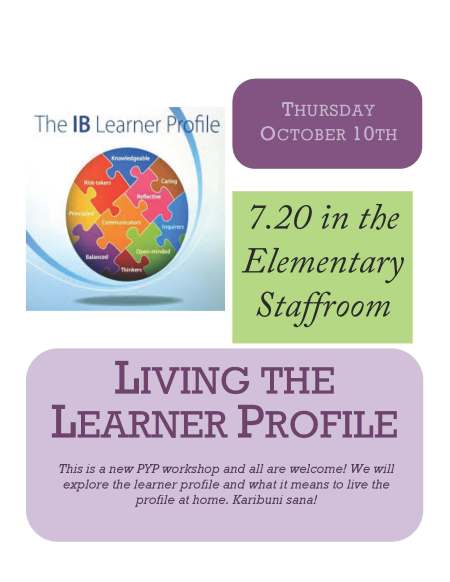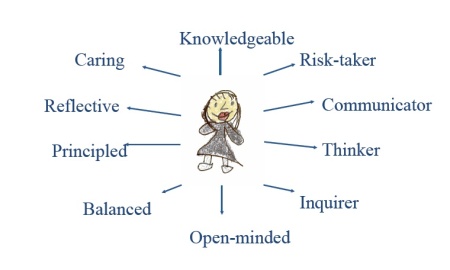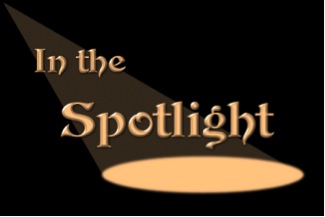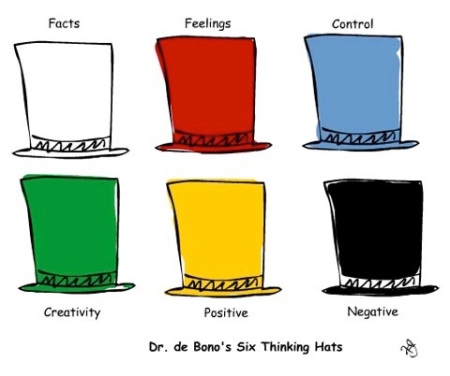 Welcome to the International School of Tanganyika’s PYP Website. Here you will find what’s happening with developments in the Primary Years Programme, curriculum, examples of student work and much more. Please check back often and feel free to leave us a message with your ideas, links and good thoughts. Asante!
Welcome to the International School of Tanganyika’s PYP Website. Here you will find what’s happening with developments in the Primary Years Programme, curriculum, examples of student work and much more. Please check back often and feel free to leave us a message with your ideas, links and good thoughts. Asante!
Welcome IST’s PYP Information Site
31/01/2011The learner profile at the heart of everything
28/10/2013
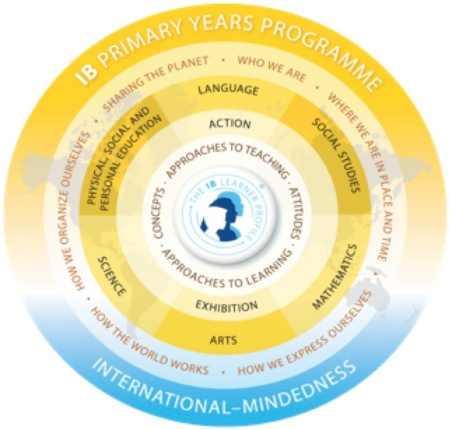 Before the break, a group of parents explored the learner profile and discussed what this might look like at home. The profile needs to come home with children! We agreed that adults need to serve as models and guides for children and show them what these attributes look like in different settings. please click on the link below to see a summary of what parents came up with:
Before the break, a group of parents explored the learner profile and discussed what this might look like at home. The profile needs to come home with children! We agreed that adults need to serve as models and guides for children and show them what these attributes look like in different settings. please click on the link below to see a summary of what parents came up with:
Profile Attribute from parents
PYP Workshop on Thursday, October 10th @ 7.20am
04/10/2013
You are most welcome to a workshop on the LEARNER PROFILE on Thursday, October 10th at 7.20am in the Elementary Staffroom. We will explore the different traits and discuss how to live these traits every day. This is a new workshop and I look forward to seeing both new and old (well, not really “old”) faces!
Welcome to another school year at IST
23/08/2013Hello and welcome (back) to IST. My name is Leah Bortolin. I am the PYP coordinator at the elementary school. I am looking forward to seeing and getting to know as many parents as possible. This year I will offer a number of workshops:
September 12 – An introduction to the PYP
October 10 – The learner profile
November 21 – The six traits of writing
January 16 – Inquiry
February 27 – Writing text types
March 27 – Approaches to learning (skills)
April 17 -Action
May 22 – What to do in the holidays
I welcome you all to come and have a chat anytime in room 4b!
Learning Through Lyrics
27/01/2013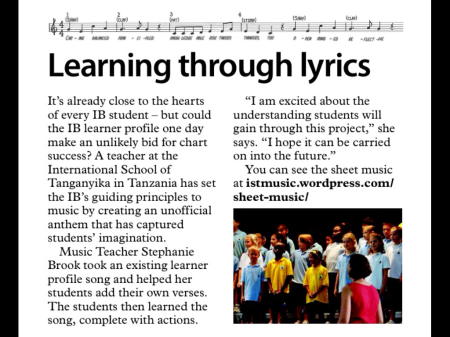
Our very own Ms Brook has been published in the IB World Magazine!
Spotlight on …. caring
09/01/2013IB learners strive to be caring
They show empathy, compassion and respect towards the needs and feelings of others. They have a personal commitment to service, and act to make a positive difference to the lives of others and to the environment.
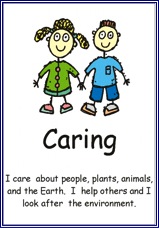
This is often seen as the most straightforward and easy to implement of the Learner Profile attributes. However, there is more to consider than it might at first appear. Being kind and friendly certainly fall under the umbrella of caring. However, we can also care for people we don’t know, for our personal possessions, for our physical and natural environment, and for the planet.
The EC students have just begun to study the idea that we have relationships with other living things that share our environment. By the end of the unit, they will not only understand which things are living or not, and what they need to survive, but they will have begun to explore how their actions can make a positive or negative difference to a variety of living things.
Grade 1 have already considered how our choices affect our environment, and have realized that reducing, reusing and recycling have a big impact on our world. Many of them have taken student-initiated action, including one group writing a proposal to Mr Lorenzini for starting a compost project at school. Check out some of their other ideas for action on their blog http://istgrade1.wordpress.com/
In an upcoming unit, Grade 3 will be exploring the issues connected with the fact that while water is essential to live, the Earth has a limited amount. Their growing understanding of this issue will hopefully encourage them to explore ways they can care for Earth and others by reflecting on and changing their behavior.
Grade 4 students showed an increasing understanding of the rights of children everywhere, and their discovery that these rights are not always met led to many actions. A powerful choice that many students made was to take a vow of silence for a day, in respect for those children around the world who do not have a voice. An excerpt from their assembly on children’s rights can be found on their blog http://istgrade4.wordpress.com/
Some suggestions for how to be caring include:
- Perform random acts of kindness
- Look out for each other’s well being
- Help with housework
- Reuse your water bottle
- Pass on toys and books you don’t need to others
Can you add to this list? Send your ideas, and your photos of people caught being caring to me at scook@istafrica.com, or add comments below.
Spotlight on … open-minded
11/12/2012December’s learner profile attribute in the spotlight is an appropriate one for the holiday season.
IB learners strive to be open-minded
They understand and appreciate their own cultures and personal histories, and are open to the perspectives, values and traditions of other individuals and communities. They are accustomed to seeking and evaluating a range of points of view, and are willing to grow from the experience.
At a time of year when many families and communities are celebrating their beliefs in a variety of ways, it is an opportunity to share our own important aspects of our identities with others, as well as to be receptive to and learn about what makes other members of our community special. Another way to celebrate our diversity, there is value in identifying some of the many similarities we share, even with our various perspectives and values.
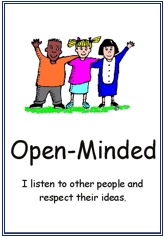 Grade 1 students have been exploring this very idea in their ongoing unit with the central idea: Communities have different celebrations with similar features. Many of them already understand that everyone, regardless of religion, nationality or culture, has many reasons to celebrate. They are also discovering that all these different celebrations have many features in common, including decorations, special food, and symbols.
Grade 1 students have been exploring this very idea in their ongoing unit with the central idea: Communities have different celebrations with similar features. Many of them already understand that everyone, regardless of religion, nationality or culture, has many reasons to celebrate. They are also discovering that all these different celebrations have many features in common, including decorations, special food, and symbols.
Grade 2’s recent Who We Are unit also gave students an opportunity to exercise open-mindedness. They were exploring the central idea that understanding our identities helps us to understand and respect others. They have learned about the visible and deeper aspects of our identities through exploration of the cultural iceberg.
As we share and enjoy each other’s special celebrations, let’s remember to find ways to model and value open-mindedness in ourselves and our children.
De Bono’s Thinking Hats – a tool for communication
27/11/2012Dr Edward De Bono is an international authority on creative thinking and the direct teaching of thinking skills. His most famous work is the creation of the Six Thinking Hats, a tool for thinking about a problem or situation from a variety of angles, one at a time. It’s a handy tool for having children think around a topic and communicate their thoughts from different perspectives.
Try the hats on while thinking around the idea of holidays:-
- Red Hat – With my red hat on I communicate my feelings and emotions. Not why I am feeling a certain way but just how I feel right now. Holidays make me feel…
- Yellow Hat– With my yellow hat on I communicate the good points, how something will help us and why it will work. The great things about holidays are…
- Black Hat – With my black hat on I communicate the bad points. I ask – Is this true? Will it work? What are the weaknesses? The disadvantages of the holidays are…
- Green Hat – When I put on my green hat, I express creativity. I share different ideas and make suggestions. In the holidays I am going to try something new like…
- White hat – With my white hat I communicate the facts and information. Last holidays I….
- Blue Hat – If I have my blue hat on, I communicate my thoughts. I am thinking about what I will do in my holidays and planning my first day. I am going to do some cooking. First I will………..then…………and …………..Finally I will……………..
Communicators in Action!
21/11/2012 As we continue to focus on the learner profile attribute “communicators” this November, it might be opportune to share with you a newly documented section of our curriculum. Our end of year expectations for oral language have been incorporated into a new continuum covering all aspects of communication.
As we continue to focus on the learner profile attribute “communicators” this November, it might be opportune to share with you a newly documented section of our curriculum. Our end of year expectations for oral language have been incorporated into a new continuum covering all aspects of communication.
This continuum focuses not only on oral language (listening and speaking) but acknowledges that communication is also visual, and identifies the strand” viewing and presenting”.
Speaking and listening combine into a transactional process. Listening involves more than just hearing sounds. It requires active and conscious attention in order to make sense of what is heard. Purposeful talk enables learners to articulate thoughts as they construct and reconstruct meaning to understand the world around them. “In an inquiry-based learning environment, oral language exposes the thinking of the learner.”
Presenting and viewing involves interpreting, using and constructing visuals and multimedia, allowing students to understand the ways in which images and language interact to convey ideas, values and beliefs. Visual text includes advertisements, brochures, computer games and programmes, websites, movies, posters, signs, logos, flags, maps, charts, graphs, diagrams, illustrations, graphic organisers, cartoons and comics. Learning to interpret this data, and to understand and use different media, are invaluable life skills.
As I wandered around school this week on a quest to find and document communication in action, I saw and heard examples of both expressive (creating and sharing meaning) and receptive (receiving and construction meaning) communication – a glimpse of which is captured here (and not just from students!). The statements in italics are examples of learning expectations from our new communication continuum.
 Hanging out! Begins to listen attentively, and speak appropriately, in small and large group situations
Hanging out! Begins to listen attentively, and speak appropriately, in small and large group situations
 Figuring out together how to make Rangoli patterns: Uses questions to inquire, probe and clarify to enhance understanding
Figuring out together how to make Rangoli patterns: Uses questions to inquire, probe and clarify to enhance understanding
 Performing in assembly! Uses performances to tell stories about people and events from various cultures, including their own.
Performing in assembly! Uses performances to tell stories about people and events from various cultures, including their own.
 Being a good audience: Displays audience etiquette and appropriate responses
Being a good audience: Displays audience etiquette and appropriate responses
 Giving directions: Uses gestures, actions and body language with words to communicate
Giving directions: Uses gestures, actions and body language with words to communicate
 Learning in other languages: Follows classroom directions and routines, using context cues
Learning in other languages: Follows classroom directions and routines, using context cues
 Responding to questions: Listens appreciatively and responsively, presenting their own point of view, and respecting the views of others.
Responding to questions: Listens appreciatively and responsively, presenting their own point of view, and respecting the views of others.
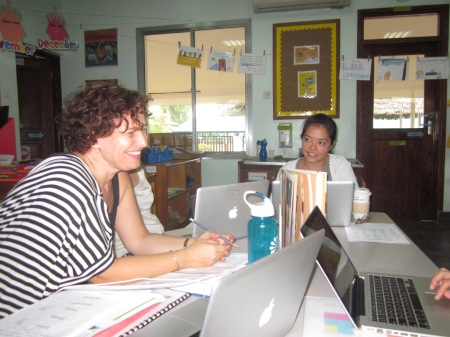 Planning collaboratively: Works cooperatively towards a common goal, taking an active part in a creative experience.
Planning collaboratively: Works cooperatively towards a common goal, taking an active part in a creative experience.
 Saying goodbye: Uses language to address needs, express feelings and opinions
Saying goodbye: Uses language to address needs, express feelings and opinions
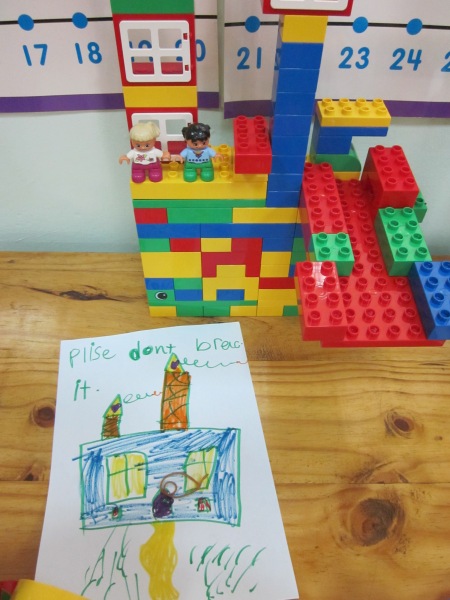 Writing signs and messages: Selects and incorporates colours, shapes, symbols and images into visual presentations
Writing signs and messages: Selects and incorporates colours, shapes, symbols and images into visual presentations
 Viewing on the internet: Views visual information and shows understanding by asking relevant questions and discussing possible meanings
Viewing on the internet: Views visual information and shows understanding by asking relevant questions and discussing possible meanings
 Sharing your principles! Uses language to address needs, express feelings and opinions
Sharing your principles! Uses language to address needs, express feelings and opinions
Please share your own experiences and ideas about what good communicators by leaving a comment here, or by emailing me at scook@istafrica.com .
References:
Making the PYP Happen in the Classroom (IBO 2009)
IST Communication Continuum
Learner Profile in the Spotlight
14/11/2012 The IB learner profile is the IB mission statement translated into a set of learning outcomes for the 2st century. It is a statement of the aims and values of the IB, and an embodiment of what the IB means by “international-mindedness”.
The IB learner profile is the IB mission statement translated into a set of learning outcomes for the 2st century. It is a statement of the aims and values of the IB, and an embodiment of what the IB means by “international-mindedness”.
High ideals, but the challenge is: how can we make this vision come alive?
The IB learner profile is displayed in every classroom, and particular attributes are selected for focus during each unit of inquiry. Adults look for ‘teachable moments’ when we can catch a child demonstrating a learner profile attribute and use it to help others understand what it looks like.
However, the profile should not be a focus just for our students. Perhaps the most powerful, yet challenging, strategy for teaching students these attributes is that of modeling, as all this idealistic talk holds little value and meaning if the adults in our community fail to model the attributes we want to see our students exhibit.
The entire school community – students, teachers, support staff, parents – all need to work together to demonstrate an understanding of, and commitment to the attributes of the learner profile. To this end, we are introducing the spotlight feature – an opportunity to take some time to explore each attribute, develop our own understandings of what each means, and strive to demonstrate it in action.
In your IST appointment calendar (created by EPN, and on sale in the Elementary Front Office) you may have noticed that each month, a learner profile attribute is described. November’s attribute is the subject of our first spotlight:
IB learners strive to be communicators
They understand and express ideas and information confidently and creatively in more than one language and in a variety of modes of communication. They work effectively and willingly in collaboration with others.
Here are some ways IB community members around the world have made the attribute of communicator their own:
We are communicatorswhen we listen and observe carefully the thoughts, words, actions and feelings of our children. We recognise that children and parents have 100 different languages. We express ourselves in a respectful and empathetic manner. Parents of children at Wesley College, Melbourne, Australia
I am a communicator when I use my face, body, words, drawings and writing to tell someone how I feel or what I am thinking. A student from K International School, Tokyo
We value open and honest communication with staff, parents and children and encourage opportunities to express our ideas and listen to others. We openly communicate our goals and ideas.Educators at Wesley College
Here’s my challenge to the IST community: let’s make the idea of communicators come alive through words, photos, symbols, quotes – any way we can.
Here are some ways you can be a communicator:
- Listen to everyone and respond clearly
- Let people finish their sentences
- Express your feelings
- Use a different language
During the rest of November, I’ll be on the hunt for photo opportunities around campus that illustrate communicators in action. I’ll also be asking children and adults to tell me what they think it means to be a communicator, or share examples. Please join in by contributing in one or more of the following ways:
- sharing your own photos showing communication in action
- helping your child represent the attribute through pictures, words, or other media
- sharing anecdotes from home of when someone (adult or child) was an effective communicator
- finding stories that illustrate the attribute
Email me your examples of communicators in action and I’ll post them here. Log in to add your comments directly.



 Posted by Mikey McKillip
Posted by Mikey McKillip 